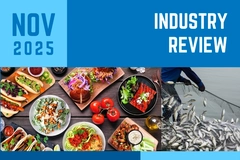
- Industry news
Industry news
- Category news
Category news
- Reports
- Key trends
- Multimedia
Multimedia
- Journal
- Events
- Suppliers
Suppliers
- Home
- Industry news
Industry news
- Category news
Category news
- Reports
- Key trends
- Multimedia
Multimedia
- Events
- Suppliers
Suppliers
Symrise lifts curtain on flavor creation with AI tools at forefront

21 Mar 2022 --- Often considered to be swathed in mystery, flavor creation entails a host of complex steps, from the initial brief to final end-product tests. However, Symrise is shedding light on its processes, with director functional flavor solutions Dr. Katharina Reichelt telling FoodIngredientsFirst how technology is taking on an increasingly significant role.
“In the future, flavor developers can expect to see more AI-guided development tools – the science behind it is ever-evolving,” she anticipates.
Symrise, which prioritizes “science-powered flavor creation,” has already implemented new tools like predictive or AI modeling, including to decode ancient recipes.
These technologies help screen the company’s existing portfolio and find suitable ingredients that experts can use to create a flavor.

A holistic toolkit
Another tool is ProtiScan, which analyzes flavor release from alternative protein bases.
The company also uses liquid chromatography (LC)-Taste and gas chromatography – olfactometry (GC-O), which combine chemical separation methods with sensory analysis.
Real-life behaviors – taking into account saliva and mouth temperature – is also a key part of the process. Therefore, Symrise uses close-to-nature technologies such as an artificial mouth model.
Finding a 100% match takes some manual fine-tuning of ingredients by flavorists, who can access a library of ingredients that constantly evolves as new natural raw materials are identified.
Reichelt notes that many of these raw materials are unique to Symrise.
After multiple sensory testing rounds, the taste is incorporated into an end-product application, which is then tested by a panel of consumers.  The first step is to decode the molecular principles of a potential reference sample that already meets some of the requested characteristics.
The first step is to decode the molecular principles of a potential reference sample that already meets some of the requested characteristics.
Can tech ever replace humans?
Reichelt suggests that AI should be seen as a source of inspiration rather than a replacement for humans. “AI modeling helps us generate new ideas because it can propose new combinations of raw materials that we probably never would have thought of, just because it’s not in our usual line of thinking.”
“By doing some of the basic work for us, it also gives us more degrees of freedom to be more creative and fine-tune novel combinations,” she continues.
AI can also help speed processes and avoid mistakes by building on existing learnings.
However, Reichelt says only time will tell if there could ever be a completely AI flavorist that is also able to cater to taste demands.
“We do already have models that include consumer liking to a certain extent, but we’ll have to see how far we can actually go.”
Market insights drive targets
The flavor creation process starts when the research and technology (R&T) department receives a project brief with defined objectives and characteristics.
Reichelt notes that there is a wide degree of variation between the specificity of customers’ requests.
“Some do a lot of sensory consumer insights themselves, so they’d be very precise in terms of what they ask of us. Nonetheless, we are also able to generate market research.”
This means that in some cases, Symrise could challenge whether a brief is really the ideal profile. For example, the company recently carried out a project on the sweetness of products.
“The question is, is it actually necessary to build back exactly the same amount of sweetness? Or are consumers looking for a different level of sweetness in a sugar-reduced product? This is where our team can generate data to discuss whether it makes sense to aim for the customer’s target, or they might propose something else.”
Some customers do not have detailed market insights to begin with, but Symrise can play a role in suggesting different tonalities, taking various applications into account.
Ultimately, the R&T team might end up creating a completely new solution or reconstructing an existing taste.
Different application considerations Newly developed flavors must be tested to see how they develop over time and in different environmental influences.
Newly developed flavors must be tested to see how they develop over time and in different environmental influences.
The team also brings in application knowledge. Some customers don’t have a detailed understanding of how different bases can interact with different flavors, notes Reichelt.
“Ideally, you would not develop something in isolation. Aspects like fat or heating can all impact the outcome of the flavor in the final application,” she says.
Another aspect is the rise of plant bases. “When you want to move a flavor into a plant-based application, there will be some modifications – you need to test and tweak it. Therefore, it’s good to have analytics supporting this creation process to understand how single molecules interact with your base.”
Symrise has application teams for different categories, including bakery, confectionery and beverage labs. Here, it can test flavors on generic bases to see how they perform.
Generating openness
Overall, Reichelt compares the flavor creation process to different instruments in an orchestra contributing to an enjoyable piece of music.
“Creating a flavor is a highly complex task, involving many different technologies and processes.”
She also notes that while the flavor industry can be a “little bit of a black box,” it’s important that customers understand how Symrise operates.
“Once they understand our way of thinking, we can generate more openness in collaborations and work more quickly.”
By Katherine Durrell











